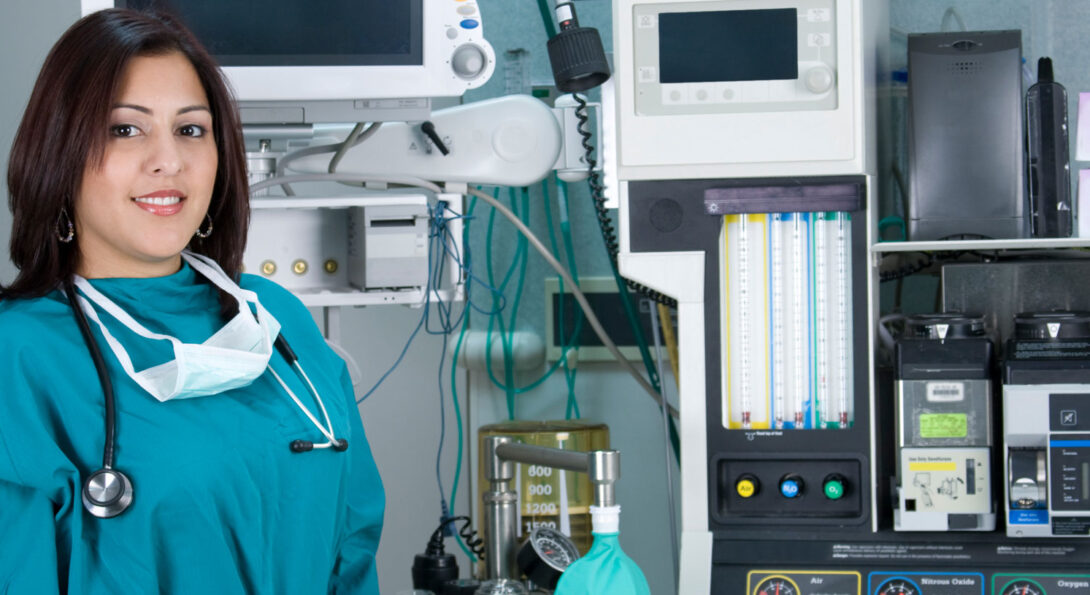Anesthesiology Residency: Curriculum

The anesthesiology residency four-year program offers a robust and comprehensive training experience. The core curriculum for anesthesiology residents comprises a series of learning modules. The modules focus on basic and advanced topics outlined in the American Board of Anesthesiology (ABA) examination content outline, ABA certification requirements, leadership and healthcare systems fundamentals, and essential clinical skills. Residents will have daily lectures in the first month (July), and from then on, once-weekly lectures on the assigned academic day (Friday) starting in August of each year and extending through the end of June.
Curriculum
- In Training exam preparation:
Our resident lecture series, Problem-Based Learning Discussions, ABA keyword topics review, and practice questions synergistically prepare our residents for ITE. - ABA basic exam preparation:
Our CA-1 lectures are based entirely on the ABA basic examination content outline. In addition, we have a comprehensive ABA keyword topics review and practice questions prior to the exam. - ABA advanced exam preparation:
Our CA-2 and CA-3 lectures are Problem-Based Learning Discussions and are based entirely on the ABA advanced examination content outline. - Oral board exam preparation:
Our residents participate in semiannual mock oral examinations, which simulate the actual examination. - OSCE exam preparation:
We provide practice sessions to prepare residents for the OSCE component of the applied ABA certification staged exams.
More About the Program
Rotation Schedules
Clinical Base Year (CBY) rotation schedule
| Rotation | Month(s) |
|---|---|
| General Internal Medicine | 2 |
| Nephrology | 1 |
| Critical Care Medicine | 2 |
| General Surgery | 1 |
| Emergency Medicine | 1 |
| Infectious Disease | 1 |
| Cardiology | 1 |
| General Operating Room | 2 |
| Pulmonology | 1 |
| General Pediatrics | 1 |
Clinical Anesthesia Year 1 (CA-1)
| Rotation | Month(s) |
|---|---|
| General Operating Room | 8 |
| Obstetric Anesthesia | 1 |
| Neuroanesthesia | 1 |
| Acute Peri-Operative Pain | 1 |
| Pre-Operative Clinic | 0.5 |
| Post Anesthesia Care Unit | 0.5 |
| Cardiothoracic Anesthesia | 1 |
Clinical Anesthesia Year 2 (CA-2)
| Rotation | Month(s) |
|---|---|
| Critical Care Medicine | 1 |
| Vascular Anesthesia | 1 |
| Neuroanesthesia | 1 |
| Regional Anesthesia | 1 |
| Ambulatory Anesthesia | 1 |
| Cardiothoracic Anesthesia | 1 |
| Pediatric Anesthesia | 2 |
| Chronic Pain | 1 |
| Obstetric Anesthesia | 1 |
| Thoracic Anesthesia | 1 |
| General Operating Room | 2 |
Clinical Anesthesia Year 3 (CA-3)
| Rotation | Month(s) |
|---|---|
| General Operating Room | 3 |
| Cardiothoracic Anesthesia | 1 |
| Obstetric Anesthesia | 1 |
| Advanced Airway Management | 1 |
| Critical Care Medicine | 1 |
| Regional Anesthesia | 1 |
| Perioperative Echocardiography | 0.5 |
| Non-Operating Room Anesthesia | 0.5 |
| Elective | 4 |
Additional Information

- CRNAs are a very important component of the anesthesia care team model. In this residency program, you will have the opportunity to work alongside our CRNAs and better understand your future role as leader of the anesthesia care team.
- Education fund provided.
- Peoria is one of the most affordable places to live in Illinois. The average Peoria home value is $112,716. Visit peoria.org for more information about the Peoria, Illinois community